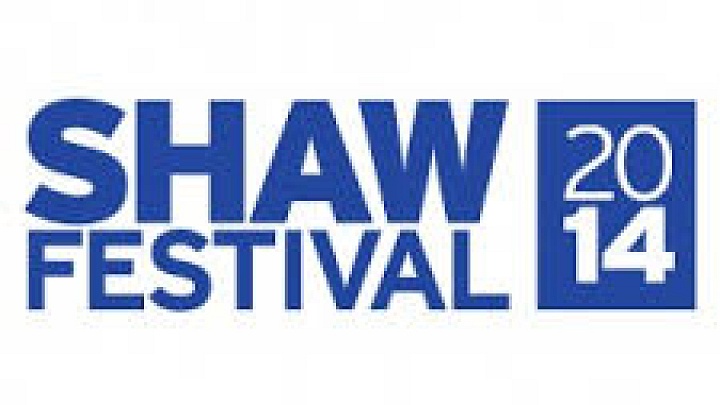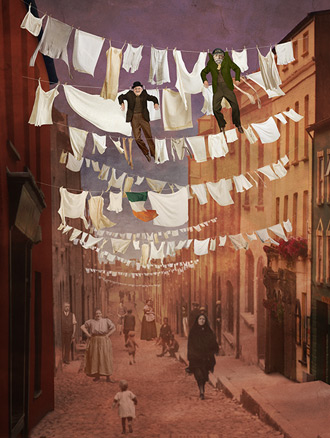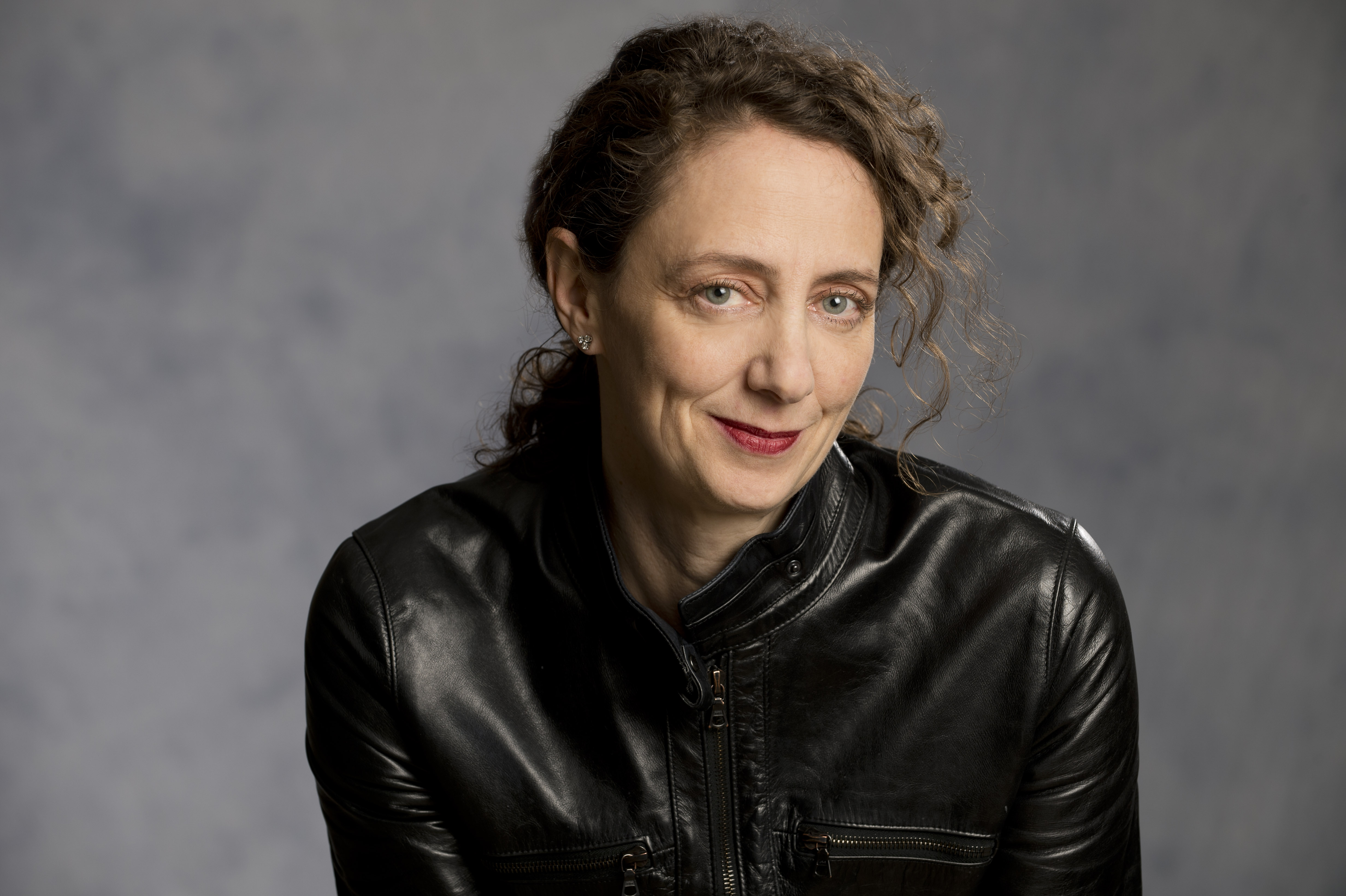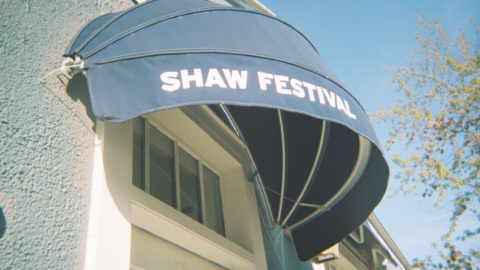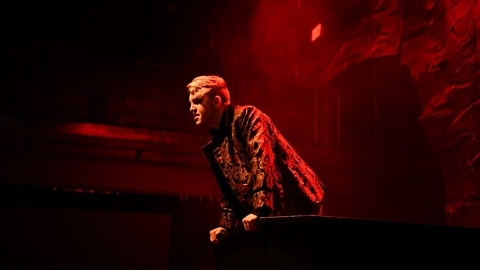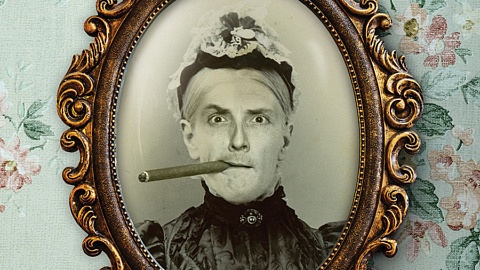Hello theatre creators, educators, scholars and everything in between! I hope you’re having a productive-yet-restful summer. Ever wonder what it’s like...
Shaw Internship Blog
DART fourth-year student Keavy Lynch recently finished a six week internship at the Shaw Festival this summer. Here is a consolidated list of blog posts from her time there.
Thoughts around the Table
May 13, 2014
In the first, she muses on tablework – the early phase of a rehearsal in which the director, performers and other creative team members come together to work through the script, before they get on their feet.
From my own experience of tablework, I was not surprised that at the Shaw Festival it involves a lot of questions. What I was surprised about is how little time is spent on answers. All of the sessions that I attended (for Juno and the Paycock and The Philanderer) had in common an open, conversational atmosphere, in which cast members felt free to pose questions, express opinions, and raise issues. The discussions involved everyone in the cast – even the youngest actors and people not in the given scene. Everyone in the cast contributed freely- something which at first worried me, as I was concerned with the “accuracy” of what was being said.
At the first session I attended, I was confused by how open the conversation was, and wondered why the director wasn’t saying anything – and for a while I actually thought that person hadn’t done their homework. However, after attending a number of such sessions, I now understand that it’s really important to many directors’ processes that everyone contributes. For these directors the endgame of this phase of the rehearsal period isn’t getting answers. This means that if an actor raises a question like “How long have we [the characters] known each other?”, many members of the cast will give their point of view. Similarly, when discussing what might be cut from a scene, many actors weigh in about the effects that cutting or keeping a line would have on the scene.
Further, directors rarely said “yes” or “no”. On one show, the director would say “I think so” and “I’m not sure” rather than giving definite statements on anything the actors proposed. This open vocabulary was used by all of the directors. Even when they made statements they would phrase them openly such as “I could be wrong, but I just want to point out…” The only things that were set down definitely by the end of the tablework process were clear facts from the text, and details of cultural context (for example, in Juno these included the meanings of Gaelic phrases, or the title of the song an actor was quoting from.)
Some of the kinds of questions that were brought up at the table included:
1) Questions on cultural references, such as “Is that from a song?” (Such questions were the only ones answered directly by the directors)
2) Questions about the subtext of a particular scene. Example: “So is that more of a ‘no thanks’ or ‘no bloody way’?
3) Questions on historical context. Ex: “Did they have welfare back then?”
4) Questions on the plot/characters. Ex: “So why doesn’t my character tell the truth about that?”
5) Questions on the context of a scene. Ex: “So is it noon? How long ago was the previous scene?”
Something else that I saw a lot of in tablework was directors posing questions to the actors. This functioned well because of the work that the actors had already put into the script; each actor was familiar enough with the text to be able to give their opinions on questions like:
So are you the older sibling?
So that’s interesting, isn’t it, that you just leave without saying anything?
So, what was that all about?
How drunk is everyone at this point?
Do you know about that before he says it?
After I’d attended a number of rehearsals at the table, I was able to talk with Eda Holmes, the Shaw’s associate artistic director (and the supervisor of the Shaw Internship), and get her point of view on tablework. She said that for her, it’s successful when you ask interesting questions, and get the actors excited about the play. Some things Eda mentioned that she hopes to address in tablework are: the playwright’s worldview, what can be known from the text, what can’t be known from the text, and who the characters are and what they want.
What I got out of these sessions as an emerging director is how useful such work can be in uniting a cast. Obviously this functions better at a place like the Shaw Festival when actors are rarely late or miss rehearsals (so everyone gets the same information); as opposed to in the student context where lateness and absence are quite common. Nonetheless I can apply it to my practice too. For example, in the past I have held tablework sessions just for the actors in a particular scene. After this experience, I think that would miss half the point, as the cast would not have unified points of inquiry into the text, and actors would miss important cultural and historical contextual details from other scenes which could inform their own.
I also understand the role that tablework has in setting the tone for rehearsals. If the actors converse openly, without worrying about the accuracy of each point that is made, it creates an open and friendly environment in the rehearsal hall which will be useful throughout the process, especially as the actors get up on their feet and start blocking. I think that if conversations at the table are too tightly controlled by the director, then the actors may feel less comfortable experimenting and going with their instincts in the blocking process because they may be worried about following the directors’ vision. I have seen this collaborative approach to tablework clearly pay off in subsequent blocking sessions, that I will report on in more detail next week.
On their Feet
May 18, 2014
In her second blog, Keavy Lynch reports back on watching several productions in the blocking stage of their rehearsals – that is, when the actors’ movements on the stage and physical actions are established.
The blocking process at Shaw is one of trial-and-error and experimentation. I was able to witness blocking for both The Philanderer and Juno and the Paycock; and I also sat in on some rehearsals for The Sea, in which the play was past initial blocking, but the staging was continuing to evolve and change. Overall, I found that the process was much more flexible than I was expecting (this is a common theme in my posts).
 The directors that I observed all encouraged their casts to experiment and use their instincts in the process. I was expecting that at least one director would have a clear plan for how the blocking of the scene should be, and either ask the cast to stick to it, or at least get the cast to use it as a starting point. When I asked about this approach to blocking, Eda told me that there are directors who work from a clear blocking plan from the start, but that the last director at Shaw who worked like that was the late Neil Munro. According to Eda, Munro laid out every detail of the blocking from the start, and allowed the actors to experiment with their roles only within this tightly-blocked framework. Apparently, he adopted this strategy because when he was an actor he never knew enough about the character during blocking to make informed choices, and he preferred that the director give him blocking, which his performance would then develop from. I would be interested to know if Neil Munro’s approach to blocking is generational and more common for older directors, or if it was just his personal style (I will ask Eda about this later).
The directors that I observed all encouraged their casts to experiment and use their instincts in the process. I was expecting that at least one director would have a clear plan for how the blocking of the scene should be, and either ask the cast to stick to it, or at least get the cast to use it as a starting point. When I asked about this approach to blocking, Eda told me that there are directors who work from a clear blocking plan from the start, but that the last director at Shaw who worked like that was the late Neil Munro. According to Eda, Munro laid out every detail of the blocking from the start, and allowed the actors to experiment with their roles only within this tightly-blocked framework. Apparently, he adopted this strategy because when he was an actor he never knew enough about the character during blocking to make informed choices, and he preferred that the director give him blocking, which his performance would then develop from. I would be interested to know if Neil Munro’s approach to blocking is generational and more common for older directors, or if it was just his personal style (I will ask Eda about this later).
At the rehearsals that I attended, before they began blocking a scene, the directors would go over contextual details of the scene (when the scene takes place, where the entrances and exits go to), and the actors would read through the scene before getting on their feet. One of the directors I observed gave the actors their starting positions, and then let them go through short parts of the scene before stepping in and making suggestions. Another let the actors run all the way through the scene, and then asked questions about the blocking choices that they made, such as “Are you expecting to see him there?” and “how pissed off are you right now?” Questions were very important to both Juno and The Philanderer blocking, and both directors raised many new questions on top of the ones that were brought up in tablework.
In rehearsals for Juno and the Philanderer, the directors did not commit firmly to any decisions during the first blocking rehearsals, and instead made comments like “let’s play with that for a bit” and “let’s see what happens”. The direct statements that the directors made were often connected with the overall atmosphere of the scene, or noting the importance or mood of a particular moment; for example: “It has to be dangerous”; “There has to be a sense that you wonder if she’s still in the house”; “I think it has to escalate for sure”.
As I expected, the starting blocking was much more set down by the director in scenes with a large number of people onstage or in which a lot of action needed to happen. However, even in these, actor instinct was a big part of the process, and all members of casts seemed free to make suggestions or to raise questions.
It quickly became clear to me why the directors trusted the actors’ instincts in blocking. All of the actors that I saw had great instincts, and threw themselves into the scenes fully, despite still being on book. For example, in blocking a scene from Juno and the Paycock one of the actresses improvised fixing her hair in the mirror, putting on a jacket, and arguing with a gentlemen caller (most of which involved both hands, so her script was often held under her chin or her arm in between lines), at the same time half-reading her lines off the page, and acting them honestly and with intention. In The Philanderer, some of the scenes involve over-the-top, almost slapstick movement, and the actors blocking those scenes weren’t at all afraid to run around the stage, jump over set pieces, or embrace other actors – having only run through the scene a couple of times! Having observed a number of blocking rehearsals, the most striking thing that I took from them was the courage of the actors and the trust that the directors had in them (and that they had for their directors).
NOTE: It is worth pointing out that all of the directors that I watched were female. Although I don’t think this necessarily accounts for their democratic blocking styles, I do want to bring up this article that was posted on HowlRound recently:http://www.howlround.com/the-perils-of-directing-while-female
Members Only
May 29, 2014
In her third blog post, intern Keavy Lynch looks into the work of the company’s Membership department.
In addition to witnessing the rehearsal process, my time at the Shaw Festival has included sitting in on weekly Marketing department meetings and helping out with membership events, which have given me some insight into the financial reality of the company.
The Shaw Festival is the second-largest repertory theatre company in North America (the largest being Stratford), and it takes a tremendous amount of money, resources, and organizational infrastructure in order to create 10 productions every season, and the variety of associated events and programs. Last year, the company’s revenue was $28,982,000.00.
At the festival, an impressive 66% of the revenue is “earned revenue” (ticket sales, gift shop etc) – last year, that meant $19,197,000.00 of earned revenue. In order to make that much money, the company must meet two goals- selling a large number of tickets, and selling those tickets at a high average ticket price.
Good seats to a regular evening performance might cost $85 (really good ones are over $100), but there are many different discounts and offers available – such as $24 student matinees, and discounts for early booking, so that the average ticket price for the show might be more like $65 (last year, the overall average ticket price was $64.62).
In order to keep the average ticket price up, the festival uses a strategy called dynamic pricing. This allows them to charge more for tickets to the shows that are selling out, and to offer discounts and 2-for-1 offers on shows that aren’t selling as well to encourage more people to see them. (Extreme examples of dynamic pricing can happen on Broadway- for example, tickets to The Book of Mormon currently start at $228).
Assuming that the average ticket price is high, and that audience members are attending in droves (some shows in the larger theatres can sell 80% capacity, and last year’s production of Arcadia in the Studio Theatre sold out its whole run), the theatre still needs to make 1/3 of its revenue from other sources, such as fundraising and government grants.
One source of revenue is annual membership – which starts at $100, and has the most exclusive benefits for people paying over $2000 per year. In order to encourage people to join, members have benefits such as early booking, and a members’ lounge. Exclusive members’ events are another way the company encourages members to join (and renew their memberships).
Last week, I helped to set up for a “meet the actors” event, and I got a sense of just how many people must be involved in order to hold a successful members’ event. First of all, the events must be fit into the Shaw Festival’s enormous master schedule to ensure that all of the people needed are free, and that there is a space available. Then the distribution department sends out the schedule of events to all the members (this usually means that the dates must be set before the annual season brochure is mailed out), and the special members’ priority ticket phone line must be prepared to receive their reservations. Next, the facilities department receives a memo or “function sheet” stating what must be set up for the event and when, and food services must set up the required refreshments (for this event, just tea and coffee). All of these departments are co-ordinated for this event by the head of membership services. On the day of the event, housekeeping has to stand by in case the event gets messy, and someone may be sent to help the members find parking. The box office must also be told when/where the event is happening so that they can direct members, and additional staff may be needed on site to ensure that everyone gets where they need to be.
The actual event lasted for an hour, and featured actors at different points in their careers – one actor was new to the festival, one was in her eighth season, and one in his eleventh – but all seemed very comfortable and conversed openly with the audience. There were a couple of fairly standard talk-back questions (one person asked “How do you avoid getting the lines confused between the two shows?”), but some of the questions were very interesting, and offered fascinating insights. Several audience members asked about the process of understudying, and the actors offered thoughts into the challenges they face, as when, sometimes, they must understudy shows in which they don’t otherwise appear. This means that in worst-case scenarios, an actor may have to go on for a role having only watched the understudy video with one blocking rehearsal and one run-through, never having seen the show live!
The most interesting question for me was when a member asked where the shows rehearsed before the three new rehearsal halls were built in 2004 – apparently the Shaw only had one rehearsal hall before then, and the other shows would have to rehearse in all kinds of crazy locations such as church basements! It really surprised me that, considering the quality and production values at the festival, they’ve only had a full set of rehearsal halls for 10 years!
After all this, the festival must hope that the event is successful and that the members enjoyed it in the hope that they will continue to donate to the festival (and may even increase their level of membership). Last year the company made $999,000 from memberships (and some of members also contributed to the over 3 million in private donations). Running “meet the actors” events is only a very small part of the effort and time that goes into recruiting and keeping members.
Helping out with this members’ event gave me a brief glimpse into the insane amount of communication and teamwork that is required to make anything happen at the festival, and has increased my understanding of just how hard it is for a theatre company to recruit donors and members.
Most of the information in this post comes from the Shaw Festival’s 2013 Annual Report. Some additional information comes from the “fast facts” section of the Shaw website.
Related Posts
For nearly two years, theatre lovers have felt entrapped in their own little purgatories. Artists have been unable to perform on stages, and audiences been...
Frances Johnson graduated from the Department of Dramatic Arts in 2020 and was about to begin an internship at the Shaw Festival when the Covid-19 pandemic...
For nearly two years, theatre lovers have felt entrapped in their own little purgatories. Artists have been unable to perform on stages, and audiences been...
Frances Johnson graduated from the Department of Dramatic Arts in 2020 and was about to begin an internship at the Shaw Festival when the Covid-19 pandemic...
Leave a Reply (Cancel Reply)
Twitter Feed
Blogroll
DARTcritics.com is partially funded by the Marilyn I. Walker School of Fine and Performing Arts, in support of student learning; experiential education; student professionalization; public engagement with the teaching, learning and production activities of the Department of Dramatic Arts; new ways of thinking; and the nurturing of links with our communities.

